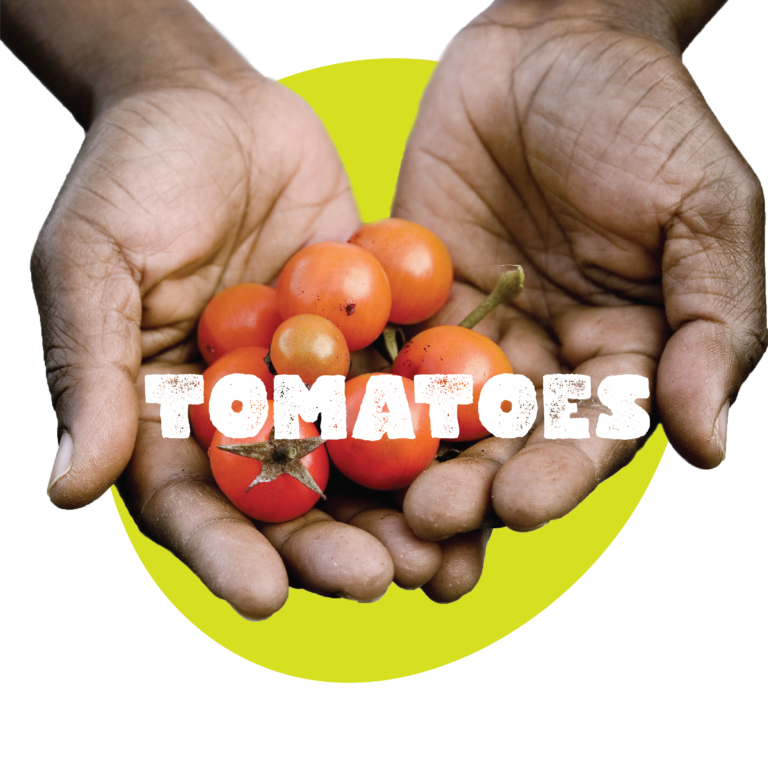
Why tomatoes?
For new growers bush tomatoes are by far the best tomatoes to grow with our unpredictable summers. Small fruits ripen faster in the late summer months and bush types don’t require support or much maintenance.
Where?
You can grow these in the smallest of spaces- pots, old compost bags, or even hanging baskets but they do need a sunny sheltered site, plenty of watering and in summer months a weekly liquid feed.
When?
Sow: Feb, March on a warm windowsill indoors. Or buy young plants in April to grow on.
Grow: April, May, June
Eat: July, August, September, October
Tomatoes can be sown from seed from the end of February on a warm sunny windowsill, you can carefully transplant the growing plants into bigger pots every 3 weeks OR, when short on time and space you can buy cherry tomatoes from the end of April from a plant sale local to you, a garden centre or supermarket. Be sure to look for cherry or bush type tomatoes.
Growing tips
When young bush plants reach the height of a pencil, pot them into their final growing container- a hanging basket, a big houseplant pot or even an old compost bag. Move plants into a sheltered growing site.
Make sure any container has holes to allow for drainage. Grow in peat-free compost. More and more peat-free varieties are available, but beware, they dry out quickly. In dry periods, the soil under the surface should be damp but never wet to touch. Watering first thing in the morning or at night gives the plants time to take up water.
Can you collect rainwater near your growing space or grow your peas near the kitchen sink- vegetables can cope with dirty dishwater!
Indoors tomatoes can be grown in a wide sunny windowsill or floor space, but they will need to be pollinated by hand; when there are flowers on your plants, gently brush them with a paintbrush moving your brush between flowers to ensure cross-pollination.
Outdoors the bees will do the work, but plants need a sunny, warm sheltered site and most likely some protection at night until the middle or end of May, depending on where you are growing. Old bubble wrap or an old sheet or plastic placed gently around the plants should work. Don’t be tempted to buy horticultural fleece- it tears easily and brings more plastic into your garden.
Once tomato plants start flowering, feed your tomatoes with a liquid feed fertiliser once every 10 days- you can stop feeding towards the end of the summer when the last fruits are ripening.
With a good summer, you can harvest tomatoes until the first frost.
If you are happy with your harvest, it’s worth saving some seed for next year. We will show you how in the autumn months.
Every growing space and every season is different and changes how we grow. Grow 6 is a place to start to practice and learn how to grow and adapt to these changes. Along with supporting new growers through regular updates, your tips and experiences are welcome as we all ‘Get Growing’.

